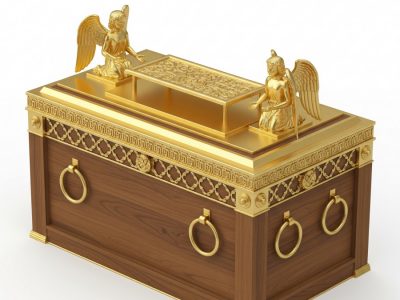The Ark of the Covenant in Ethiopia? An Ancient Mystery

Imagined by Gemini AI
The Biblical and Ethiopian Connection
The Ark of the Covenant (a sacred chest described in the Bible as holding the Ten Commandments) has been missing from the historical record for over 2,500 years. While many theories exist about its fate, Ethiopia claims it has been in Axum for nearly three millennia.
This belief is rooted in the Kebra Nagast, a 14th-century Ethiopian epic that blends biblical narrative, oral tradition, and national history. At the heart of the story is a royal meeting between Israel’s wise King Solomon and the enigmatic Queen of Sheba, whom Ethiopian tradition calls Makeda. According to the Kebra Nagast and the Bible’s 1 Kings 10, the Queen of Sheba traveled to Jerusalem to test Solomon’s wisdom. The Ethiopian version adds a romantic dimension: the union of Makeda (Queen of Sheba) and Solomon led to the birth of Menelik I, the first emperor of Ethiopia’s Solomonic dynasty.
According to the epic, when Menelik reached adulthood, he traveled to Jerusalem to meet his father. In the Kebra Nagast, Solomon welcomed him warmly and offered him royal honors. Menelik stayed for a time, then prepared to return to Ethiopia, but events took a dramatic turn.
The Great Swap: The Ark of the Covenant
The Kebra Nagast tells that Menelik’s companions, led by Azariah, son of the High Priest, secretly planned to take the real Ark of the Covenant back to Ethiopia.
“And they made a case in the likeness of the Ark, and they covered it with gold, and they brought it into the Temple… and they took the true Ark of God and carried it away in secret.” — Kebra Nagast, Ch. 53
In this telling, the Ark in the Temple after Menelik’s departure was a replica. The real Ark journeyed south, hidden in a caravan bound for Ethiopia. Solomon discovered the theft too late and interpreted it as the will of God.
This account suggests that the Ark left Jerusalem almost 400 years before the Babylonian conquest in 586 BCE, the event historians often cite as the Ark’s disappearance. If true, the Babylonians destroyed or seized only a replica.
The Ark is said to rest today in the Church of Our Lady Mary of Zion in Axum, guarded by a single monk who never leaves the church grounds. No outsider (not even the Patriarch of the Ethiopian Orthodox Church) is allowed to see it.
The Ethiopian Orthodox Church and Its Ancient Roots
Ethiopia’s link to biblical Israel is more than a legend for its people. The Ethiopian Orthodox Tewahedo Church preserves ancient Judaic practices, such as dietary laws and Old Testament feast days, alongside Christian worship. Every church contains a tabot (a consecrated slab symbolizing the Ark) in its sanctuary.
Historians debate the Ark’s fate. Some see the Kebra Nagast as a medieval political text reinforcing Ethiopia’s claim to divine kingship. Others note Ethiopia’s deep, ancient Judaic-Christian heritage as possible evidence of early contact with Israel. For the faithful, the Ark’s location is not in question; it has been in Axum for nearly 3,000 years, a sign of God’s covenant with Ethiopia. For skeptics, the mystery remains one of the greatest in religious history.
Recommended: Kingdoms and Monuments: St. George’s Church (Ethiopia)
Queens and Mothers: Makeda, Queen of Sheba, Aksum (Ethiopia)
